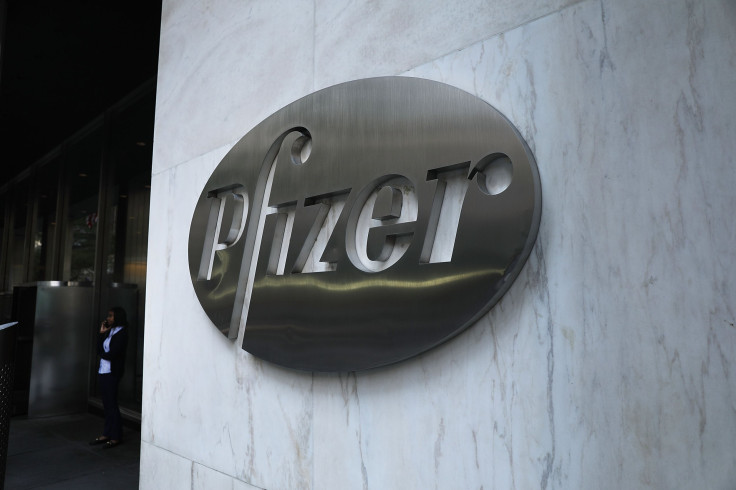Where Will Pfizer Be In 5 Years?

With a little momentum at the end of 2018, Pfizer Inc. (NYSE:PFE) could be headed for its best year yet in the 21st century. The big pharma stock is absolutely crushing the performance of the overall market.
This article originally appeared in The Motley Fool.
It's not that Pfizer's sales are soaring. The drugmaker missed analyst revenue estimates in the third quarter and probably will generate revenue in full-year 2018 only 2% higher than what it made in 2017. But Pfizer is a company in transition -- a positive one that Wall Street appears to now be recognizing.
What changes will this transition bring? Here's what Pfizer could look like five years from now.
Fading headwinds
Two major headwinds that Pfizer currently faces should be largely in the past by 2023. The company has struggled for a while with product shortage issues impacting the sterile injectables business that it picked up with the 2015 acquisition of Hospira. However, Pfizer thinks that it will see significant improvement in the supply issues by the end of 2018.
An even bigger problem has been the sales decline from a basket of older products. Pfizer has especially felt the sting of losing patent exclusivity for Lyrica outside the U.S. and for Viagra in the U.S. and in other markets. The company previously had to deal with the negative revenue impact from generic competition for cholesterol drug Lipitor and pain medication Celebrex.
The situation will get worse for Pfizer before it gets better. Lyrica is scheduled to lose U.S. patent exclusivity next month. Pfizer hopes to win FDA approval for a six-month pediatric exclusivity extension for the drug. However, even if the company obtains this extension, it only delays the inevitable.
But things will get better eventually. Within the next two or three years, Pfizer shouldn't have to worry about the negative impact on year-over-year comparisons resulting from its big drugs that have lost exclusivity. Albert Bourla, who takes over as CEO of the company in January, stated in August that he thinks that urbanization in emerging markets will create growth opportunities for its older established drugs and sterile injectables.
Winners new and old
Some of Pfizer's biggest winners five years from now are already big winners. Anticoagulant Eliquis, which Pfizer markets with Bristol-Myers Squibb, will almost certainly be on that list. EvaluatePharma projects that Eliquis will rank as the No. 5 best-selling drug in the world in 2024, with total sales of $10.5 billion.
Although momentum for Ibrance appeared to slow somewhat in the third quarter, EvaluatePharma thinks that Pfizer's breast cancer drug will be the No. 5 top-selling oncology drug in the world in 2024. The market research company projects that Ibrance will generate sales topping $8 billion.
Prevnar 13 isn't likely to generate significant sales growth over the next few years. However, Pfizer's pneumococcal vaccine is still projected to be the world's biggest-selling vaccine in 2024, with estimated sales of close to $5.8 billion.
Pfizer should also have several newer products raking in a lot of money five years from now. Pain drug tanezumab, breast cancer drug Talzenna, and lung cancer drug Vizimpro should enjoy solid success. So should Pfizer's surprisingly effective rare-disease drug tafamadis.
Expect a big bet Pfizer made on biosimilars to pay off over the next five years as well. The company's biosimilar to Remicade, branded as Inflectra, continues to pick up momentum. Pfizer awaits approval for biosimilars to cancer drugs Avastin and Herceptin, and its pipeline includes several other biosimilars in late-stage testing.
Wild cards
One thing we can't predict about Pfizer is what the company will do regarding acquisitions. Pfizer's history is chock-full of transformative deals. Going into 2018, many expected the company to make more big deals. But that didn't happen.
But Pfizer has been busy in other kinds of business development that could change the way the company looks in the future. Pfizer and Novartis are working together to test combination treatments for nonalcoholic steatohepatitis (NASH). Some observers think that treating NASH could be a $35 billion market within the next several years.
Pfizer teamed up with Bain Capital to form new biotech Cerevel Therapeutics. Cerevel's focus will be on developing drugs to treat central nervous system (CNS) diseases, including Parkinson's, Alzheimer's, epilepsy, schizophrenia, and addiction.
There's also a possibility that Pfizer will make another kind of big change. The company could choose to spin off its consumer health business into a stand-alone entity along the lines it took with its animal health business, now operating at Zoetis.
The other big wild card for Pfizer is its early stage and mid-stage pipeline. Pfizer has 34 programs in phase 1 clinical studies and 27 programs in phase 2 testing.
These experimental drugs target the treatment of multiple indications, including autoimmune diseases, NASH, various types of cancer, and several rare diseases. Pfizer also is developing new vaccines for immunizing against pneumococcal, strep, and other infections. Success in some of these areas could dramatically impact Pfizer's focus five years from now.
A few constants
While Pfizer is likely to change quite a bit over the course of the next few years, several things about the company will probably remain constant. One is Pfizer's strong generation of cash flow. The company's current products and new ones on the way should keep the money flowing in.
Another probable constant is Pfizer's dividend. Investors have long looked to Pfizer as a solid dividend stock. Whether it's five years from now, 10 years from now, or decades into the future, Pfizer and great dividends will probably go hand in hand.
Keith Speights owns shares of Pfizer. The Motley Fool has no position in any of the stocks mentioned. The Motley Fool has a disclosure policy




















